May 2013 LIP of the Month
Revising the emplacement history of the Emeishan large igneous province with high-precision U-Pb geochronology of mafic and felsic intrusions
Steve Denyszyn
University of Western Australia
J. Gregory Shellnutt
National Taiwan Normal University
Roland Mundil
Berkeley Geochronology Center
The following data is extracted from: Shellnutt, J. G., Denyszyn, S. W., & Mundil, R. (2012). Precise age determination of mafic and felsic intrusive rocks from the Permian Emeishan large igneous province (SW China). Gondwana Research, 22(1), 118-126.
For background, and more description of the Emeishan large igneous province, see the previous “LIP of the Month” entry: http://www.largeigneousprovinces.org/04oct . The present entry is an update, focusing on a recent geochronological study that applies high-precision U-Pb TIMS dating to examine the timing of emplacement of the intrusive rocks of the Emeishan LIP.
Radio-isotopic dating using different techniques (primarily micro-beam analyses) of rocks from the Emeishan large igneous province (ELIP) has yielded a range of ages from the Capitanian to the Early Triassic (Boven et al., 2002; Ali et al., 2004). In contrast, estimates based on paleontological and paleomagnetic data suggest the ELIP was emplaced rapidly (?2 Ma) and that volcanism ended by ~257 Ma (Huang and Opdyke, 1998; Ali et al., 2002; Zheng et al., 2010). New zircon CA–TIMS U–Pb ages, that have superior precision and accuracy compared to ages from micro-beam analyses, were obtained from strategic intrusive rocks of the Panxi region (Inner Zone) of the ELIP (Figure 1).
The Huangcao (258.9±0.7 Ma), Daheishan (259.1±0.5Ma), Woshui (259.6±0.5Ma) and Cida (258.4±0.6 Ma) syenitic and granitic plutons and three mafic dykes (259.2±0.4 Ma; 259.5±0.8 Ma, 257.6±0.5 Ma) yielded a narrow range of ages between >257 Ma and ~260 Ma (Figure 2).
The new results are consistent with the estimates from magneto-biostratigraphic data and a rapid emplacement model. The new Wuchiapingian ages of the Huangcao and Daheishan plutons suggests that magmatism may have lasted significantly less than 10 Ma as previously suggested by SHRIMP results (from Boven et al. 2002; Lo et al. 2002; He et al. 2007; Shellnutt et al. 2009). (Figure 3). The new TIMS ages of the mafic dykes prove incorrect the hypothesis that there is a temporal connection with the basalts’ geochemistry, specifically that ‘low-Ti’ basalts represent the early stages of emplacement (~260 Ma), while the ‘high-Ti’ basalts represent the waning stages (<257 Ma) (Xu et al., 2001; Hao et al., 2004; Xiao et al., 2004; He et al., 2010; Zheng et al., 2010; Shellnutt and Jahn 2011). The short duration of magmatism also implies that degassing of the host sediments (mostly carbonates), and thus releasing of greenhouse gasses occurred within a substantially shorter interval than previously thought, which significantly changes the loading of atmosphere per time unit. The latter corollary potentially implies severe environmental effects that may have contributed to causing the end-Guadalupian mass extinction; see: (e.g., Ganino et al., 2008; Retallack and Jahren, 2008; Ganino and Arndt, 2009; Isozaki, 2009, 2010).
Another question raised in the previous “LotM” (October 2004) entry and which remains a subject of debate for the ELIP (e.g., Ukstins-Peate et al. 2008, 2009; He et al., 2009, Ali et al., 2010) is whether uplift and doming had occurred, an important issue in resolving whether a mantle plume could have been responsible for ELIP magmatism. The authors of the previous “LotM” present a strong case for uplift; our field area contributes to this conclusion by hosting numerous examples of columnar basalts, erupted subaerially (Figures 4, 5), and therefore providing further evidence for uplift.
Work continues to progress on U-Pb dating of the ELIP, specifically on establishing an age for the latest volcanic units and establishing a firm connection between magmatism and the end-Guadalupian mass extinction.
References
Ali, J.R., Thompson, G.M., Song, X.Y., Wang, Y., 2002. Emeishan basalts (SW China) and the ‘end-Guadalupian’ crisis: magnetobiostratigraphic constraints. Journal of the Geological Society of London 159, 21–29.
Ali, J.R., Lo, C.-H., Thompson, G.M., Song, X.Y., 2004. Emeishan basalt Ar/Ar overprint ages define several tectonic events that affected the western Yangtze platform in the Mesozoic Cenozoic. Journal of Asian Earth Sciences 23, 163–178.
Ali J. R., Fitton J. G., Herzberg C., 2010. Emeishan large igneous province (SW China) and the mantle-plume up-doming hypothesis. J. Geol. Soc. London 167, 953–959.
Boven, A., Pasteels, P., Punzalan, L.E., Liu, J., Luo, X., Zhang, W., Guo, Z., Hertogen, J., 2002. 40Ar/39Ar geochronological constraints on the age and evolution of the Permo-Triassic Emeishan volcanic province, southwest China. Journal of Asian Earth Sciences 20, 157–175.
Ganino, C., Arndt, N.T., 2009. Climate changes caused by degassing of sediments during the emplacement of large igneous provinces. Geology 37, 323–326.
Ganino, C., Arndt, N.T., Zhou, M.-F., Gaillard, F., Chauvel, C., 2008. Interaction of magma with sedimentary wall rock and magnetite ore genesis in the Panzhihua mafic intrusion, SW China. Mineralium Deposita 43, 677–694.
Hao, Y., Zhang, Z., Wang, F., Mahoney, J.J., 2004. Petrogenesis of high-Ti and low-Ti basalts from the Emeishan large igneous province. Geological Review 50, 587–592 (in Chinese).
He, B., Xu, Y.-G., Huang, X.-L., Luo, Z.-Y., Shi, Y.-R., Yang, O.-J., Yu, S.-Y., 2007. Age and duration of the Emeishan flood volcanism, SW China: geochemistry and SHRIMP zircon U–Pb dating of silicic ignimbrites, post-volcanic Xuanwei Formation and clay tuff at the Chaotian section. Earth and Planetary Science Letters 255, 306–323.
He, B., Xu, Y., Campbell, I., 2009. Pre-eruptive uplift in the Emeishan? Nature Geoscience 2,
530-531
He, Q., Xiao, L., Balta, B., Gao, R., Chen, J., 2010. Variety and complexity of the Late-Permian Emeishan basalts: reappraisal of plume–lithosphere interaction processes. Lithos 119, 91–107.
Huang, K., Opdyke, N.D., 1998. Magnetostratigraphic investigations of an Emeishan basalt section in western Guizhou Province, China. Earth and Planetary Science Letters 163, 1–14.
Isozaki, Y., 2009. Illawaara reversal: the fingerprint of a superplume that triggered Pangean breakup and the end-Guadalupian (Permian) mass extinction. Gondwana Research 15, 421–432.
Isozaki, Y., 2010. Reply to comment by J.R. Ali on “The fingerprint of a superplume that triggered Pangean breakup and the end-Guadalupian (Permian) mass extinction” by Yukio Isozaki. Gondwana Research 17, 718–720.
Retallack, G.J., Jahren, A.H., 2008. Methane release from igneous intrusion of coal during Late Permian extinction events. Journal of Geology 116, 1–20.
Shellnutt, J.G., Jahn, B.-M., 2011. Origin of Late Permian Emeishan basaltic rocks from the Panxi region (SW China): implications for the Ti-classification and spatial– compositional distribution of the Emeishan basalts. Journal of Volcanology and Geothermal Research 199, 85–95.
Shellnutt, J.G., Zhou, M.-F., Zellmer, G., 2009. The role of Fe–Ti crystallization in the formation of A-type granitoids with implications for the Daly gap: an example from the Permian Baima igneous complex, SW China. Chemical Geology 259, 204–217.
Shellnutt, J. G., Denyszyn, S. W., Mundil, R., 2012. Precise age determination of mafic and felsic intrusive rocks from the Permian Emeishan large igneous province (SW China). Gondwana Research 22(1), 118-126.
Ukstins Peate, I., Bryan, S.E., 2008. Re-evaluating plume-induced uplift in the Emeishan large
igneous province. Nature Geoscience 1, 625-629.
Ukstins Peate, I., Bryan, S.E., 2009. Pre-eruptive uplift in the Emeishan? Nature Geoscience 2,
531-53.
Xiao, L., Xu, Y.G., Mei, H.J., Zheng, Y.F., He, B., Pirajno, F., 2004. Distinct mantle sources of low-Ti and high-Ti basalts from the western Emeishan large igneous province, SW China: implications for plume–lithosphere interaction. Earth and Planetary Science Letters 228, 525–546.
Xu, Y., Chung, S.L., Jahn, B.-M., Wu, G., 2001. Petrologic and geochemical constraints on the petrogenesis of Permian–Triassic Emeishan flood basalts in southwestern China. Lithos 58, 145–168.
Zheng, L., Yang, Z., Tong, Y., Yuan, W., 2010. Magnetostratigraphic constraints on two stage eruptions of the Emeishan continental flood basalts. Geochemisty, Geophysics, Geosystems. doi:10.1029/2010GC003267.
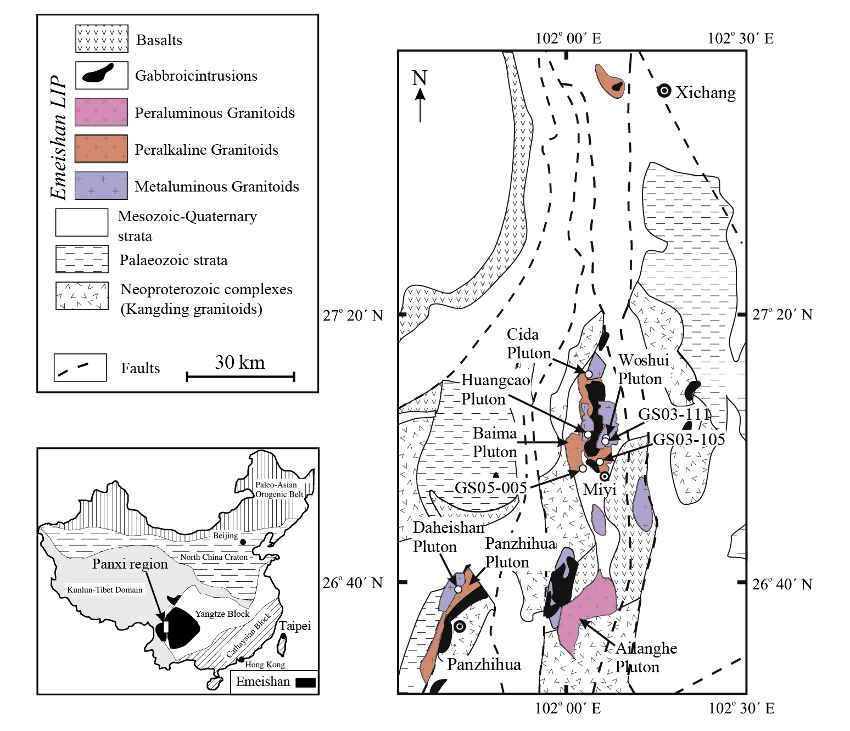
Figure 1: Map of the field area, showing the location of samples and the extent of the ELIP. From (Shellnutt et al., 2012).
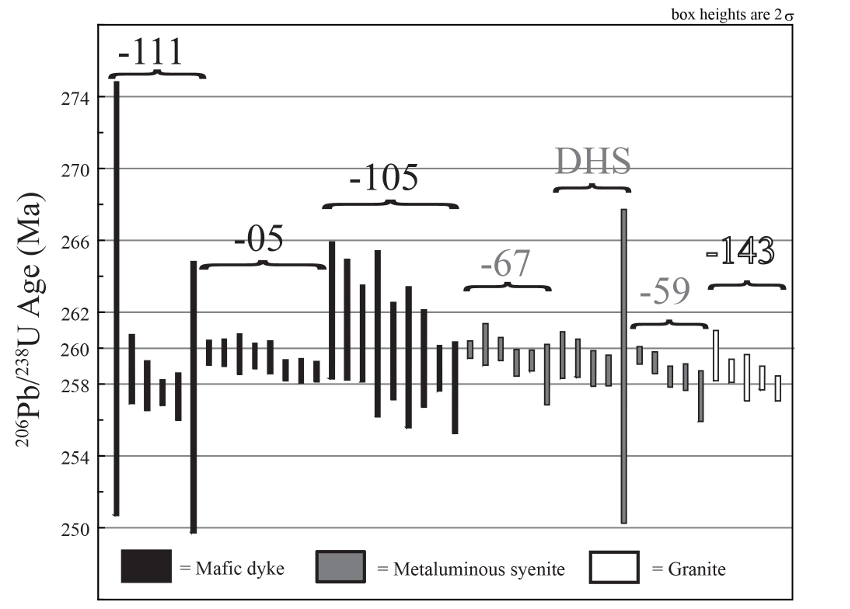
Figure 2: Summary of individual data used in the weighted-mean 206Pb/238U ages presented,
grouped by lithology type. Heights of error boxes represent 2? uncertainty. ?111=GS03-
111; ?05=GS05-005; ?105=GS03-105; ?67=GS05-067; ?DHS=DHS-1; ?59=
GS05-059; ?143=GS04-143. From (Shellnutt et al., 2012).
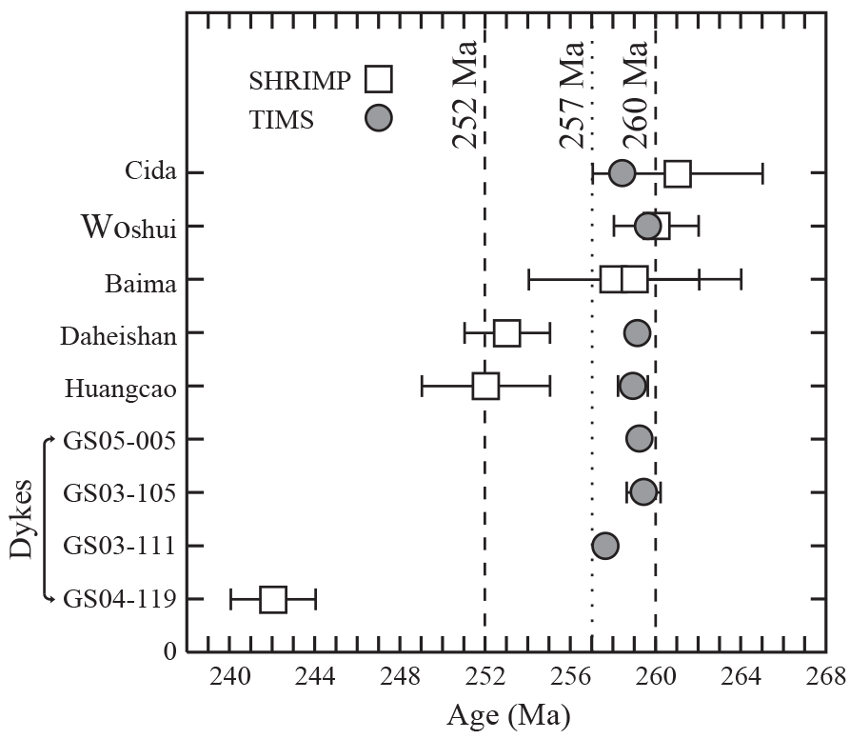
Figure 3: Comparison of previously-published U-Pb SHRIMP ages for the rocks of this study, and our U-Pb TIMS results. From (Shellnutt et al., 2012).
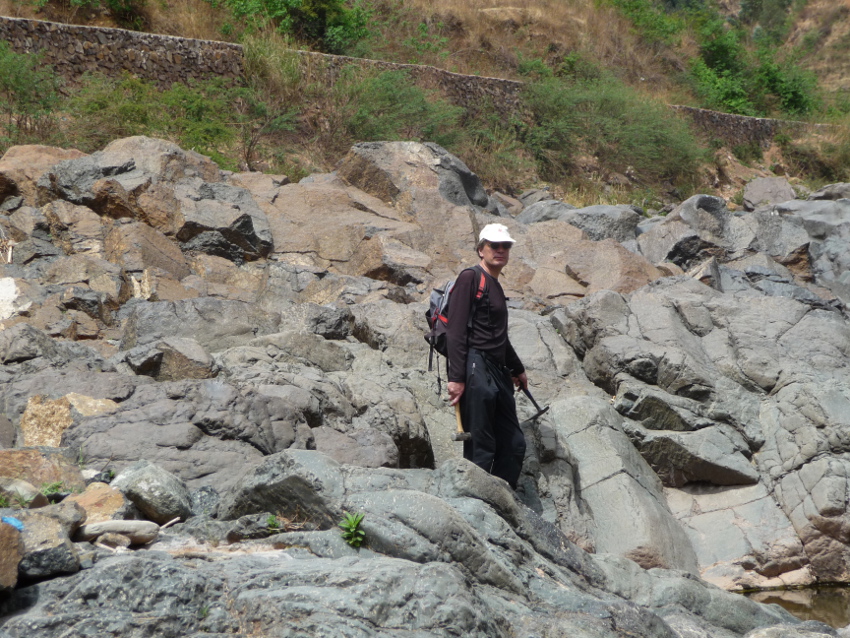
Figure 4: Example of basalt columns in the ELIP, from Yunnan Province, SW China. Photo by S. Denyszyn.
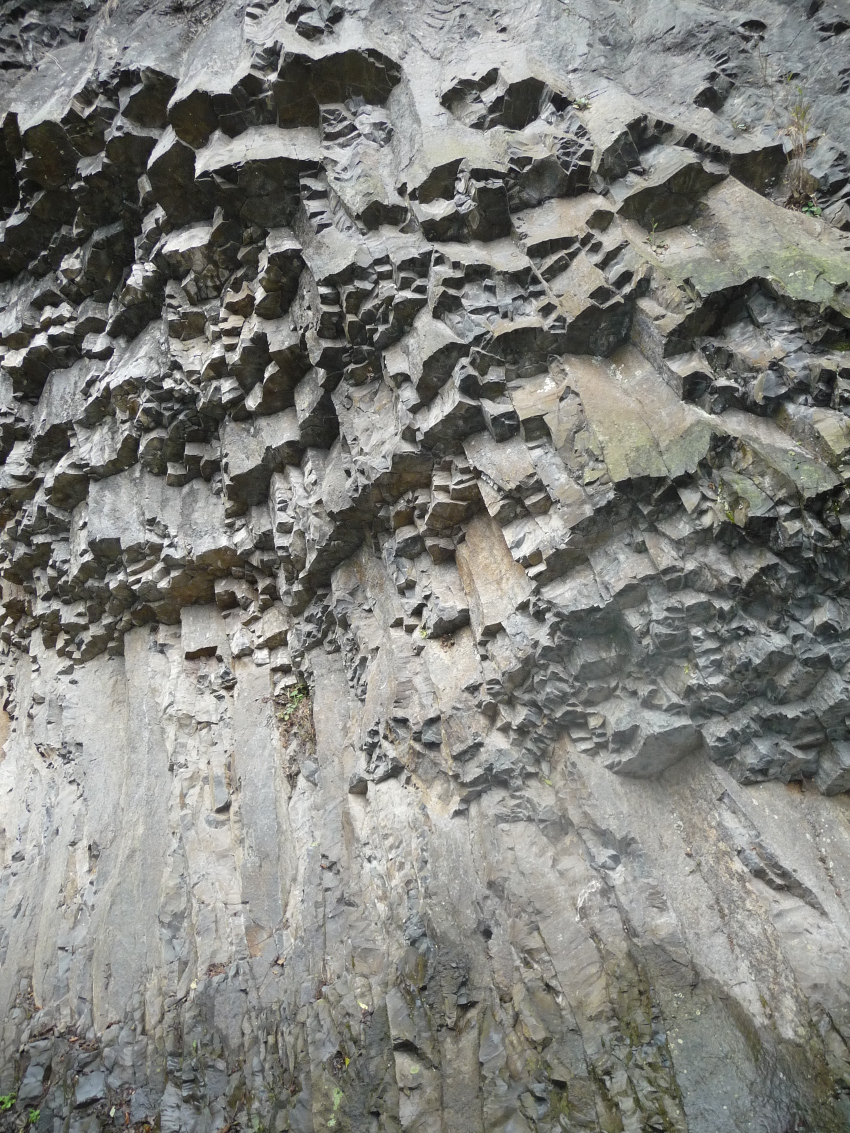
Figure 5: Example of basalt columns in the ELIP, from Yunnan Province, SW China. Columns are approximately 10 cm across. Photo by S. Denyszyn.
